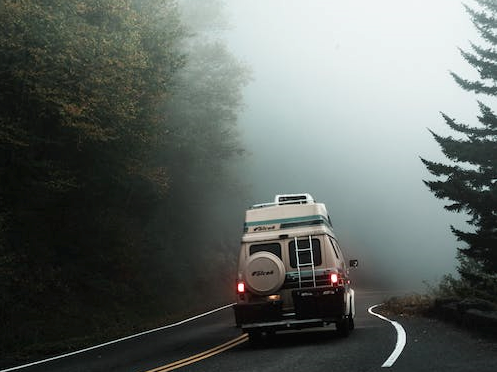Here in Iowa, we deal with two main types of fog, advection fog and radiation fog.
Advection fog happens mostly in the colder weather months. Fog will form when the moist air moves into a dry atmosphere and it forces condensation.
Radiation fog, also known as ground or valley fog, is the most common type of fog. This kind of fog happens after it rains and the conditions are clear and calm. Because there are no clouds to prevent radiation from escaping, this allows the temperature to meet up with the dew point and forms fog.
Fog lights are designed to be used at low speed during poor-visibility situations (fog, heavy mist, snow) and are different from daytime running lights. Fog lights are an extra pair of lights that are mounted low on the car and pointed to the right just enough for you to see the solid, white fog line at the edge of the road. This is because fog doesn’t settle on the road surface but hoovers about a foot above it.
Here are some tips for driving in the fog:
– Give yourself extra time to reach your destination and leave extra distance between you and the car in front of you.
– Use your low-beams to make yourself visible to both drivers ahead and behind you.
– Don’t use your high-beams lights. High-beams will reflect off the fog and make it difficult to see.
– Avoid using hazard lights while driving, other vehicles may think you’ve stopped.
– Use the right edge of the road, white fog line or roadside reflectors as a guide to stay in your lane.
How do you turn your fog lights on?
Not all cars have fog lights but they are usually operated by a separate switch from the main light controls. Some cars use buttons to activate them, one for the rear and one for the front, while others feature a collar on the light stalk that you turn back and forth to turn them on and off. You can also look in your owner’s manual for specific details or ask a Skay Automotive Technician to show you where it is!

